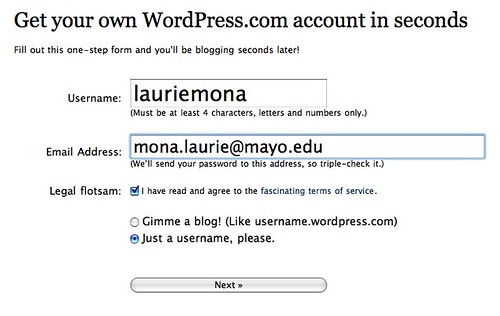 …to read this book by William Danforth (1870-1956), founder of the Ralston Purina Company, and grandfather of former U.S. Sen. John Danforth. I’ve just had the delight of finishing it after my assistant, Laurie Mona, passed it along to me last week. She had found it quite interesting and challenging, so have I, and I think you will, too.
…to read this book by William Danforth (1870-1956), founder of the Ralston Purina Company, and grandfather of former U.S. Sen. John Danforth. I’ve just had the delight of finishing it after my assistant, Laurie Mona, passed it along to me last week. She had found it quite interesting and challenging, so have I, and I think you will, too.
Mr. Danforth attributed much of his direction and success in life to a challenge from one of his teachers, when he was a sickly young boy: “I dare you to be the healthiest boy in the class.” Through this experience he learned the power of a dare to create courage and single-minded focus, to get people out of their ruts. As he summarizes it:
My practical experience has convinced me that inner growth and broadening personality come from daring and sharing. You dare to use the talents you have. You find yourself growing stronger — physically, mentally, socially and spiritually. You multiply your daring a hundredfold by sharing its fruits. You give your life away and, behold! a richer life comes back to you. This principle works through all of life:
Our most valuable possessions are those which can be shared without lessening: those which, when shared, multiply. Our least valuable possessions are those which when divided are diminished.
So, in keeping with that philosophy, I’m sharing a bit with you, as Laurie did with me.
Danforth dares the reader to adventure and action, starting with his four-square checkerboard philosophy of a balanced life (which explains the checkerboard motif on all those Purina dog-food bags.) The four sides of his checker are the physical, mental, social and spiritual, and he says when they are out of proportion we cannot become our best. And so he dares us to grow in each of these dimensions.
Here’s just one example — from “I DARE YOU TO THINK CREATIVELY” — that highlights what is compelling about this book, which was written in 1931, in the early years of the Great Depression:
The Edisons and the Marconis were the long range thinkers of yesterday. Wanted–some long range thinkers today. Where yesterday a hundred new inventions were made, a thousand new ones will be made tomorrow and some of you who read this message will dare to make them. I read an article not long ago where sombody prophesied conditions twenty years from now. Our homes would be artificially cooled in the summer just as they are artificially heated in the winter. Transportation will be just as different from today as today is from the gay ’90’s. People will dress differently, think differently, live differently. Are you leaders going to sit back and wait for yourselves to be adapted to these conditions? Or are you going to be one of those who help bring about these changes?
How amazed would Mr. Danforth be if he had lived to see today? As one who dreamed of air conditioning, how would he react to video cameras, DVDs, cell phones, PDAs and the internet? One thing I can confidently predict: he would issue the same challenge, but updated for our time. “Who will be the next Gates or Jobs? Who will develop the next Google?”
You’ll also find his language somewhat dated, hopefully in an amusing sort of way. In addition to his admonition to walk a mile a day in the fresh air, he advises daily calisthenics to “squeeze that liver.” But until you’ve had the success of a Danforth, it’s probably best not to laugh too quickly, but instead see what you can learn from him.
In I Dare You! you’ll also find some nuggets of practical wisdom I’ve noted in more contemporary books. Like David Allen in Getting Things Done, Danforth advises continually carrying a small notebook to capture creative ideas, even keeping one by his nightstand. Like Jim Collins in Good to Great, he extols the value of a “Magnificant Obsession” – or what Collins calls a Big Hairy Audacious Goal.
You can get the book on Amazon, or from the foundation established by Mr. Danforth.
I Dare You!
 Technorati: Productivity, Personal Growth, William Danforth, Purina
Technorati: Productivity, Personal Growth, William Danforth, Purina



 Technorati:
Technorati:  …to read this book by
…to read this book by